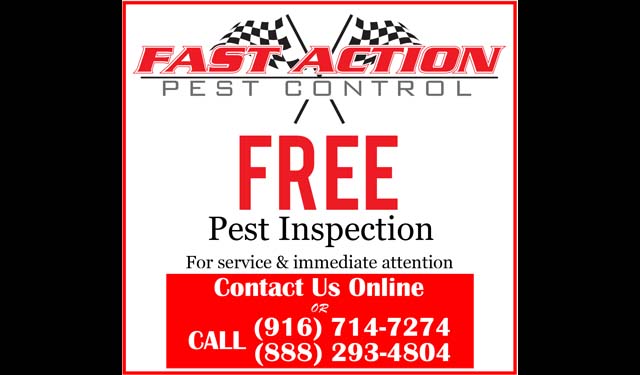This Is How to Get Rid of Termites in Your House
Termites can cause a lot of damage to homes, so it’s important to remove them as fast as possible. Here are some tips on how to get rid of termites.


According to the EPA, every year, termites cause damage that costs property owners over two billion dollars.
When you experience a termite problem, it is a two-fold problem. One is that you need to exterminate them, but the other is that they can cause extensive damage to your property.
Removing termites is a race against the clock. The earlier you get rid of them, the better. It will prevent damage to your property.
But you may wonder how to get rid of termites and their infestation. Everything you want to know about removing termites will reveal itself in this article. Keep reading for the details.
Types of Termites
In the United States, there are approximately 45 species of termites. Each of these species falls into three main types of termites, which include Dampwood, Drywood, and subterranean.
There is a unique biology and behavior for each of the species. This affects where they live and where they build their nests. It also affects their likelihood of damaging your home.
Dampwood Termites
This type lives in the wood, preferring high moisture content. Most Dampwood termites will not encounter soil, and you rarely find them in man-made structures, like your home. Wood in man-made structures rarely has enough moisture for them to make a nest.
You can find desert Dampwood and Pacific Dampwood termites in the state of California.
Drywood Termites
They often live in wood, including structural timber, dead trees, or hardwood floors. Drywood termites do not need to come in contact with soil. Drywood termites have smaller colonies and cause damage to homes at a slow rate.
Still, Drywood termites can cause significant damage to a home. You can see the western Drywood and desert Drywood termites in the state of California.
Subterranean Termites
These termites live in the soil. Plus, of any insect found in the United States, they build the largest nests. Their nests connect to food sources with mud tubes. Food sources include structural timbers, fence posts, and trees.
This type of termite can live in all U.S. states except Alaska. Unfortunately, they are responsible for most of the termite damage you see in the United States, too.
When you experience extensive damage from termite infestation, you need to seek the help of a professional to stop it.
What Do Termites Look Like?
Termites can look like flying ants. You can tell the difference with a close inspection.
Ants have a body with a thorax and a defined constricted abdomen. They have a front pair of wings that are a little larger than their body, and larger than their rear wings, too. The antennae they have are distinct from an elbow shape, with a first segment that is elongated.
Meanwhile, termites have a continuous ribbed abdomen. It is thick and has no visible waist. They have no eyes.
Termites have two pairs of wings they have are equal in length and vein filled. They are twice the length of their body. Their antennae are somewhat short and straight.
Signs of Termites
The earliest signs you see are windows and doors that seem stuck, and wallpaper or paint that seems to have damage underneath it. Further, you could see mud tubes, termite droppings, termite swarmers, and discarded wings.
While these are early signs of termites, there is much more. You could see discolored or drooping drywall. Small, pinpoint holes appear in the drywall. When you tap your wood, it sounds hollow.
Further, what looks like water damage that is causing peeling paint and excessively squeaky floor floorboards should also cause concern. A “clicking” sound is a warning sign, as soldier termites will bang their heads on your wood, shaking their bodies to let other colony members know of the danger.
Removing Termites
If the termites you have been living outside, then you should employ nematodes to help you. They are parasitic round roundworms. While microscopic, they are powerful hunters of termites.
They will burrow in a termite, and poison them within days. Nematodes are natural parasites for garden pests beyond termites too. If your termite problem is outside, you can sprinkle the area with potting soil and water, while adding nematodes to help you fight the termite infestation.
Insecticides
If you wish to rid termites from your cracks and crevices, you could try termite foams. The foam will first fill the crack or crevice and then evaporate. Then, it leaves a chemical residue behind which kills your termite nemesis upon contact.
Termite Baits
It works like other baited traps, such as the ones you can purchase for ants. It will lure the unsuspecting termite in. Afterward, it carries the poison as a food source back to their colony.
Usually, bait stations rid you of termite infestation by killing the termites during their molting process.
Termite Barriers
You could spray a special liquid pesticide on your wood chips, mulch, or soil on the outside perimeter of your home. This creates a barrier. Usually, liquid termite barriers annihilate termites when the pest ingests them.
When one termite touches the barrier, this potent pesticide spreads. Upon contact from one termite to another, it will slowly but surely kill the colony.
How to Get Rid of Termites
When you have a termite infestation, the experts at Fast Action Pest Control know how to get rid of termites. The best part is that they are local to your area, so they have experience in handling common pest issues that plague the residents of California.
If you reside in the neighborhoods of Antioch, Elk Grove, Folsom, Mountain House, Sacramento, and Vacaville, and need to annihilate the pests in your life, contact Fast Action Pest Control.
Schedule your free and immediate pest inspection now.

